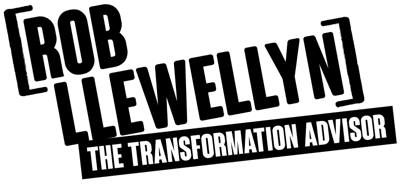 Transformation illusions occur when companies believe they are undergoing transformation, when in fact they are only making small changes. It's not uncommon for Transformation to be confused with Change, and George Westerman of MIT painted this perfectly when he explained;
Transformation illusions occur when companies believe they are undergoing transformation, when in fact they are only making small changes. It's not uncommon for Transformation to be confused with Change, and George Westerman of MIT painted this perfectly when he explained;
Right now, there are countless companies informing their workforce and stakeholders how they are proud to be transforming their business, and that they are leaders in their industry in using digital to do this. But the reality for many of these companies is that they are simply making faster caterpillars.
Three Dangerous Downsides
While fast caterpillars might increase efficiencies, cut costs, and be necessary, there are often no butterflies being created and no sign of transformation taking place. Here are three dangerous downsides to being seduced into the transformation illusion:
- Companies become so busy and preoccupied with creating fast caterpillars, that they stand still in the transformation stakes and become increasingly vulnerable to the disruption that they can't see coming. Their efforts are neither defensive nor offensive in their market.
- Companies devote their limited time, effort and resources to creating fast caterpillars, because key “change” initiatives have become their priority. They have no time or resources to do anything else (such as legitimate digital business transformation), other than create their fast caterpillars and maintain business as-usual.
- Companies are lulled into a false sense of security, because they have fallen prey to the digital transformation illusion. They might be doing extremely well creating fast caterpillars with multiple digital solutions, but there's no vision of a butterfly in sight.
There are many examples of mis-aligned perceptions of what is change and what is transformation, and the characteristics that distinguish one from the other. These mis-understandings give rise to the transformation illusion that will never go away until leaders recognise the difference between change and transformation, and act accordingly. Until leaders rid the company of this ambiguity and create a true transformational vision, they will continue to expose their companies to the three dangerous downsides listed above. This is why the first letter of the THRIVE digital business transformation acronym is dedicated to this.
Transformation is Found Outside the Comfort Zone
Successful people know that their own personal success depends heavily upon them stepping out of their own comfort zone. Not doing so puts them at risk of becoming obsolete in an ever changing and competitive world and missed opportunities. These are the same risks that firms face if they settle for “change in their comfort zone” as opposed to stepping outside into a less comfortable world of “legitimate transformation”.
In this MIT Sloan Management Review article, John Hagel III from Deloitte was quoted as saying;
“There’s a natural human instinct to stick to what you know. Don’t go out of your comfort zone because things are really scary out there. And so there’s a tendency to just hold on and just squeeze harder on what you’re currently doing.”
Lifting The Transformation Illusion
Leaders need to remove any illusion their companies might be under about their transformation, because no industry or company is immune from disruption. Until they do this, they will chug away making changes to their existing business, comfortable under the transformation illusion, while neglecting the need to truly transform.
In years gone by, the biggest risk came from rivals with a better or cheaper product or service, which firms could fend off by improving or expanding their range of products and services, or by getting to market more efficiently and imaginatively. But the world has moved on, and today's competition is often invisible until it’s too late for incumbents.
These simple three steps could mean the difference between a company's demise and survival:
- Remove all ambiguity that exists between transformation and change;
- Establish the transformation vision, strategy and roadmap;
- Undertake transformation using strategic transformation tools.
Read The Great Digital Illusion


